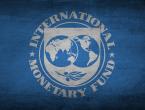EUR/USD
1.17188
0.082%
Gold
4405.38
1.518%
Oil
57.053
0.956%
USD/JPY
157.323
-0.230%
GBP/USD
1.33990
0.191%
GBP/JPY
210.802
-0.038%
After months of delays, the Northern Power Railway project, aimed at boosting economic growth in cities like Manchester, Leeds and Liverpool, will release high-level details in the new year.Uber: The testing is part of the UK’s pilot program to launch autonomous vehicles.Analysts warn that the Bank of Englands downplaying of its economic forecasts and over-reliance on alternative scenarios that fail to provide sufficiently useful data could obscure market understanding of interest rate trends.December 22nd, Futures.com reports: Analysts at Economies.com report that spot gold prices surged, breaking through $4400/ounce for the first time, and have risen nearly 68% year-to-date, setting a new all-time high. This surge was accompanied by a significant acceleration of bullish momentum, with buyers dominating the price movement.According to the latest analysis from Economies.com analysts on December 22nd, WTI crude oil futures rose slightly. Although they have reached overbought levels, the Relative Strength Index (RSI) showed positive signals, indicating that the current dominant overbought momentum remains strong and is supporting the upward trend of oil prices.











